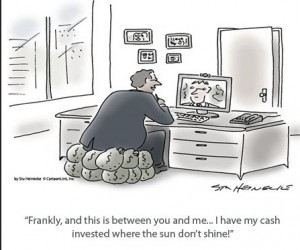Australia’s gender pay gap is 18.2%, the largest it’s been in twenty years. But according to new research from the Workplace Gender Equality Agency released today, 73.7% of organisations have not yet done a gender pay gap analysis, a step it believes could help to significantly address pay inequity.
So WGEA is separating those who appear to be accepting the gender pay gap if a problem within their organisations from those who are not via a new campaign to raise awareness on the issue.
It’s named 32 chief executives who’ve signed up as ambassadors to use their voice in urging all businesses to make pay equity a priority. By 30 September 2015, it hopes to have 100 chiefs involved.
One such CEO is AGL CEO Michael Fraser, who explained in a statement to Women’s Agenda why he decided to get involved:
“I decided to become a pay equity ambassador because it’s untenable to think that in the twenty-first century, we would not be paying equal pay for equal work. But I have come to realise, that unless we continually analyse our HR data and systems and validate the basis of our decisions as they relate to employees, we will continue to see gender inequity in business. AGL Energy Limited (AGL) conducts an annual pay equity analysis and did so most recently in June 2014. Gender pay equity analytics and reporting are embedded in AGL’s remuneration systems to ensure gender equity is at the forefront of leaders’ remuneration decisions.”
Fraser added that his executive team follow up to ensure pay decisions consider the gender inequality areas that have been identified through the analysis, and the organisation monitors gender pay equity through a number of different internal forums. AGL is also developing its pipeline of female talent by offering flexible roles and career paths, while also promoting women leaders.
WGEA is sending bottles of ‘daughter water’ to more than 3,000 across the country.
A number of the above CEOs released statements to WGEA on why they’re getting involved in the campaign. See their responses below
Pip Marlow, Managing Director of Microsoft: “A country’s national competitiveness is largely defined by its workforce so it makes no sense, especially for a country with Australia’s small population, to limit or constrain the contribution of over 50% of its people. Just as in business, we need to attract the best talent and retain the best talent so there is no room for gender bias in remuneration and performance management decisions. I call on all business leaders to commit to eliminating gender bias – it’s just good business.”
Jim Minto, CEO of TAL: “We have raised the bar for other employers that pay equity is achievable if priority is given to it. TAL has also sent a clear message to the community that we are a values-driven organisation. Being asked to become a Pay Equity Ambassador is an honour and I hope the example we have set at TAL will motivate other employers to address pay equity and produce fairer outcomes for staff.”
Steven Sewell, CEO of Federation Centres: “Recognising performance and rewarding it in an equitable manner is fundamental to creating a high-performing organisation. Eliminating gender bias is a crucial component in getting the best from all your people.”
Wayne Spanner, Managing Partner of Norton Rose Fulbright: “The CEO has to own this issue otherwise you don’t achieve change. Addressing pay equity underpins our diversity success, and understanding and addressing unconscious bias is a critical component. You need to audit the relevant data to know where the issues are and take action.”
Peter Bailey, CEO of Arup: “If we weren’t doing it we would be at odds with what we stand for. Fairness is fundamental to our business. We’d be living a lie if we didn’t act.”















